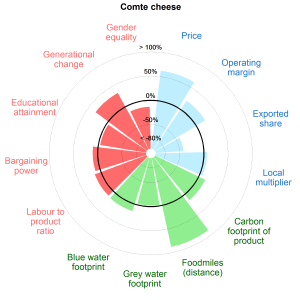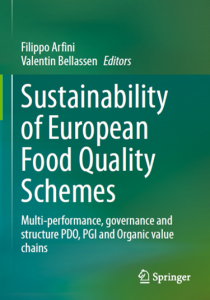Food Sustainability Indicators
Short videos
Overall summary of the performance of certified value chains, followed by a focus on economic, environmental and social aspects.
Method and database
The exhaustive lists of the economic, environmental and social indicators estimated for 54 food products in the H2020 Strength2food project are available for download here:
https://entrepot.recherche.data.gouv.fr/dataset.xhtml?persistentId=doi:10.15454/OP51SJ
The detailed method for data collection and indicator estimation and the spreasheet tool to collect data are available at the same url.
Related publications
1) A book with one chapter on 27 certified food value chains, each including:
|
  |
2) A synthesis article in Ecological Economics, with cross-comparisons of performances for all indicators
- V. Bellassen et al. (2022), The economic, environmental and social performance of European certified food. Ecological Economics 191, 107244.hal-03376106v1
3) A special issue in the Journal for Agricultural and Food Industrial Organization, with cross-comparisons of performances for each subset of indicators :
- Economic performance
- S. Monier-Dilhan et al. (2021), Do Food Quality Schemes and Net Price Premiums Go Together?
- M. Donati et al. (2021), Economic Spill-Over of Food Quality Schemes on Their Territory
- Environmental performance
- V. Bellassen et al. (2021), The Carbon and Land Footprint of Certified Food Products
- M. Drut et al. (2021), Foodmiles: The Logistics of Food Chains Applied to Food Quality Schemes
- A. Bodini et al. (2021), Water Footprint of Food Quality Schemes
- Social performance
- M. Hilal et al. (2021), Organic and Geographical Indication Certifications’ Contributions to Employment and Education
- P. Muller et al. (2021), Are Certified Supply Chains More Socially Sustainable? A Bargaining Power Analysis


